What Is Web3 and Why Can It Be the Future of Marketing?
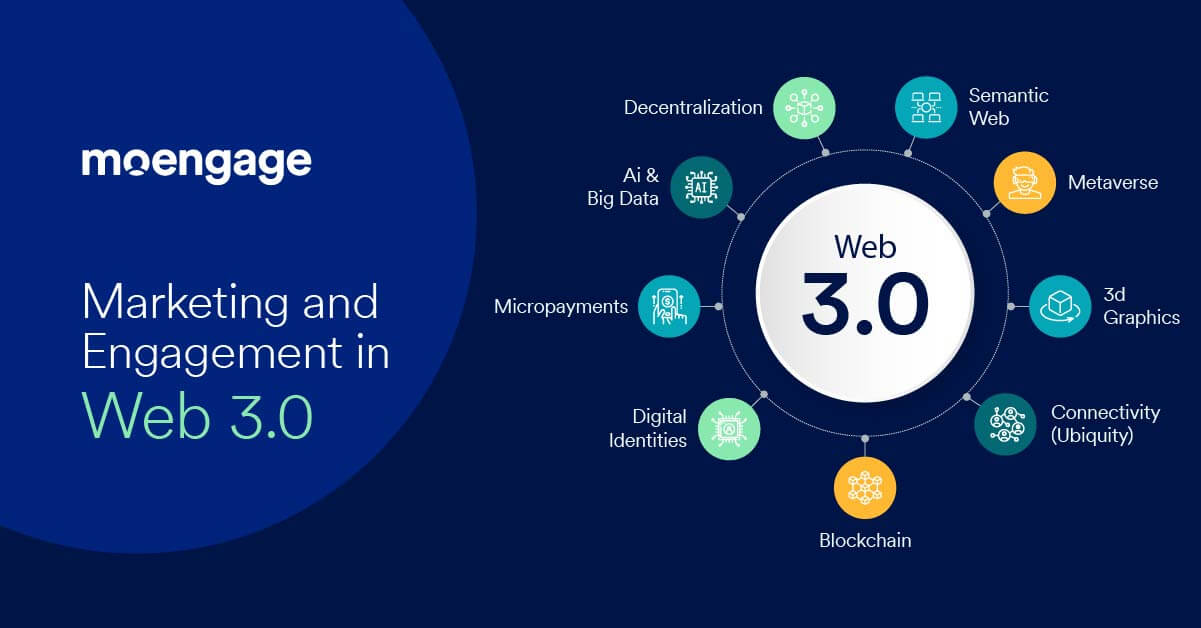
Reading Time: 5 minutes
Back in the early 1960s, when MIT’s J. C. R. Licklider popularized the idea of an extensive “intergalactic” network of computers, it didn’t take long for computer scientists to come up with “packet switching”, an electronic method of sending data and information, one of the most fundamental blocks of the internet. Fast forward to 1990, computer scientist Tim Berners-Lee invented the World Wide Web. And since then, the internet we know now has been one of the most critical aspects of our day-to-day life. The web we know today has evolved massively in the last 60 years, but more importantly, in the last 15 years.
So, What is Web3?
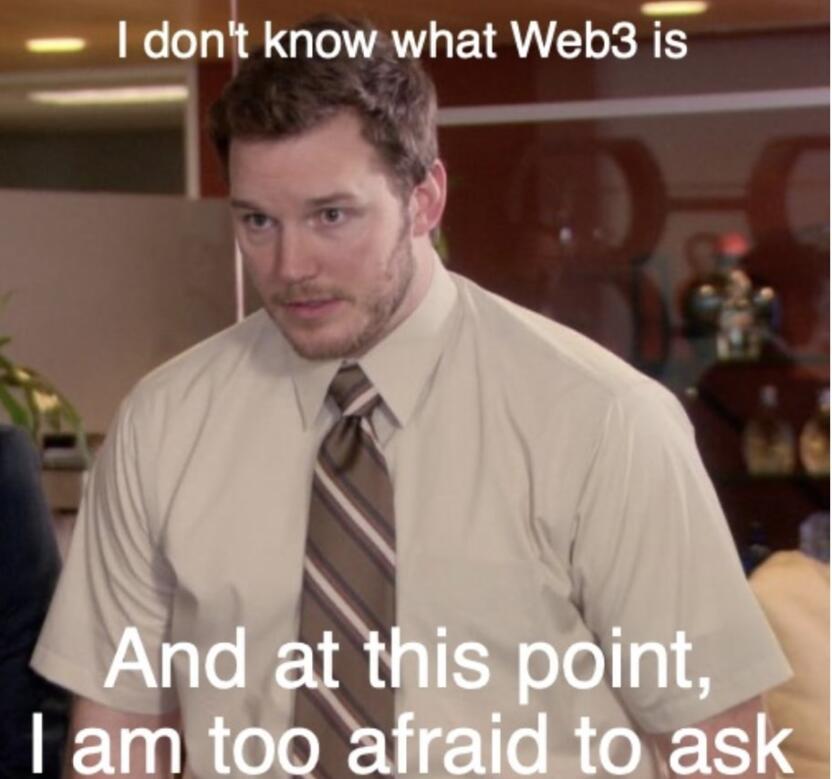
Before we understand what Web3 is, we need to understand the evolution of the web. Don’t worry! I will keep it short.
The Evolution of the Web
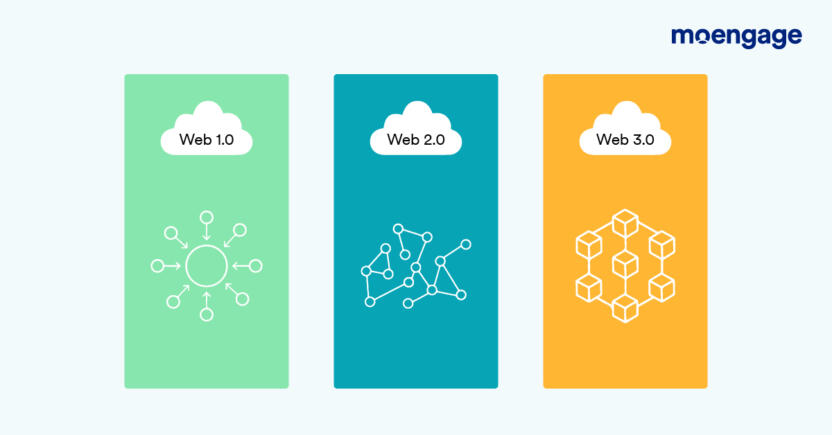
Web 1.0
The first version of the web is Web 1.0. The concept of hypertext predates the World Wide Web by several decades. The first version of the web was used for sending information between government research institutes, military or educational institutes. In this version, the larger public did not have access to the internet.
| For the reader: If you want to check something interesting, here’s the first WorldWideWeb browser. |
Web 2.0
The web you are currently using is Web 2.0. This iteration relies on user-generated content and the interoperability of the different products and systems for the end-user (you).
Another way of looking at Web 2.0 is that most of the internet relies on Big Tech since they act as the middleman between the user-generated content and the end-user. You need to rely on them in some form to access and communicate across the internet.
Web 3.0
Web3 (or Web 3.0) is a new iterative concept of the world wide web, where the middleman is eliminated, and users communicate directly, through a decentralized process involving blockchain technology and smart contracts. There is no definitive Web3 at this point, but the concept is enticing enough to attract a lot of attention.
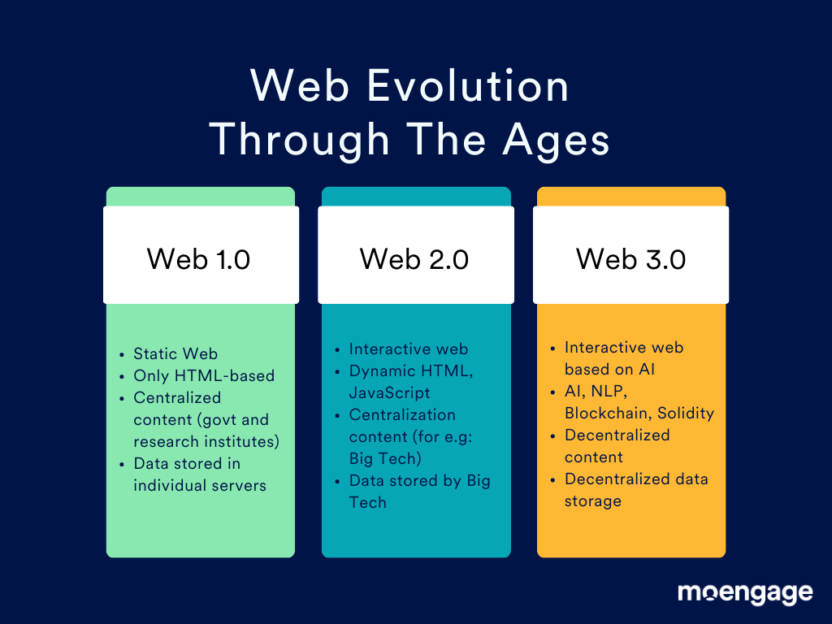
Current Marketing Landscape and The Future of Marketing
Currently, there is a lot of dependency on Big Tech for marketing campaigns by most digital organizations.
Consider this: more than 90% of the online advertising world relies on Google Ads for their campaigns. With other companies also interested in monetizing marketing campaigns through their platforms, marketing companies spend a lot of money on these platforms.
However, it is expected that Web3’s decentralized online ecosystem has the potential to change this forever. For example, a D2C clothing company can reach out to its customers directly with its latest offers directly instead of bringing them to the platform through an ad network.
And how will this work?
Let’s briefly know what pillars Web3 stand on:
- Semantic Web: It helps in making internet data machine-readable through technologies like Resource Description Framework (RDF) and Web Ontology Language(OWL)
- Artificial Intelligence: Through AI (and specifically NLP), computers can understand human language and interpret human language to find and craft quicker solutions.
- Decentralization: At the heart of Web3 is decentralization- the storing of information simultaneously in multiple locations (instead of We 2.0’s storing of information in one single server in a specific location or few specific locations), and not relying on third parties for information.
How Can Web3 Affect Marketing and Customer Engagement?
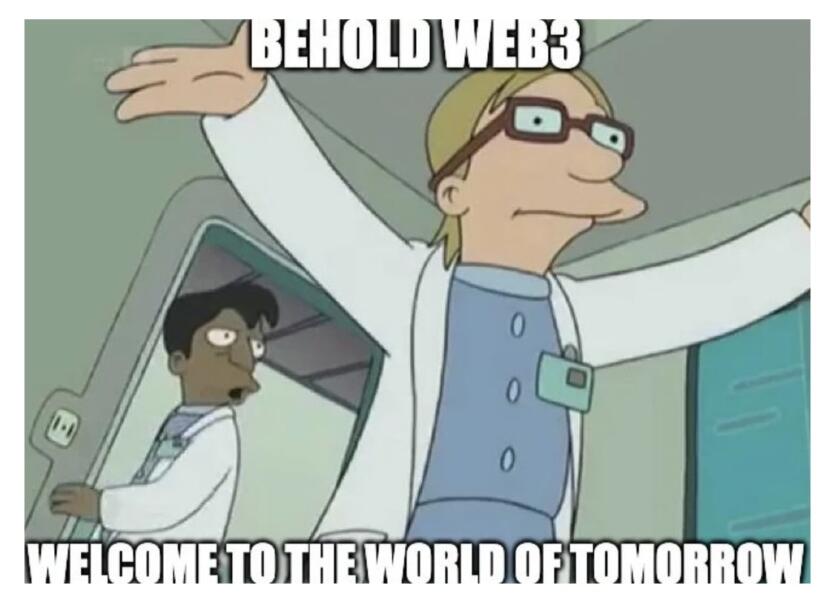
1. Content Marketing
With decentralization and the possibility of relying less on Ad Networks, content marketing will be a marketer’s best friend! You don’t have to depend on platforms to help you reach out to a broader audience since you can connect to your customers directly (eg: through NFTs). You can emerge as a thought leader/industry leader if your ideas resonate with your customers. Customers can also rely on dApps (decentralized apps) in the form of social media apps.
2. Loyalty Programs
Loyalty programs are another great way to keep your audience engaged with your product or brand. You can award their engagement by offering them exciting deals or cryptocurrencies.
3. Communities
The best way to build brand recall and loyalty is to build a community of loyal customers since, with Web3, you have the option of reaching out to your customers directly without having to worry about third-party platform restrictions and using data insights directly. Recently, Myco, a Web3 video streaming, funding, production, and distribution platform, announced that they will leverage insights from MoEngage, and use them to reach and connect with audiences better!
4. Analytics
The very nature of Web3’s decentralization process is why organizations should care about analytics and how it might affect them. Since data will be stored directly with brands or in local servers instead of global servers, it will be important to see how brands look and conclude strategies based on analytics. Data will now be accessible directly to brands instead of relying on third parties/Big Tech.
Early movers and adopters of Web3 have already started leveraging analytics and insights drawn from analytics to position themselves as market leaders. For example: WazirX, a prominent brand in India’s Fintech sector, collaborated with MoEngage to lead efforts for Web3 adoption. Their plan is to use MoEngage’s superior segmentation abilities and use this feature to scale marketing initiatives.
5. Personalization
Virtual stores are picking up in the online commerce world, and there is no place better that Web 3.0 can impact! Digital Migrators looking for an online presence but refusing to move away from a brick-and-mortar experience can leverage virtual stores, an avenue as important as NFTs and AR/VR in the Web3 world, to create a highly personalized shopping experience!
Conclusion
Although Web3 is still a work in progress, there are signs that it can be the next Internet iteration. However, one thing is certain: marketing strategies are ever-changing (consider print marketing 50 years ago vs. the current digital marketing ecosystem). It is essential that marketers are not only aware of the tech changes happening but also know how to engage with their customers even if the market and the tools are changing. Keep your ears to the ground, and don’t forget to engage with your customers genuinely, with the hope of keeping them educated and interested in what you have to offer.








